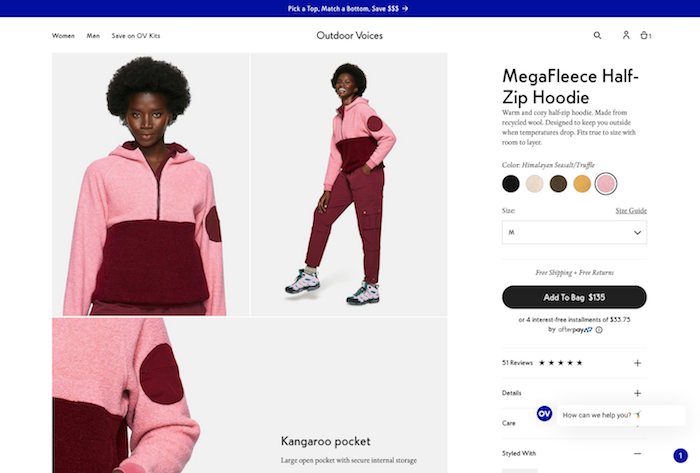Demystifying Headless Commerce: Answers to 5 Common Questions

As an ecommerce retailer, the cornerstone of your business is your online store. And, of course, we’re not just talking about a website. We’re talking about a sophisticated digital ecosystem. Simply put, the technical structure underneath your store is everything. So, whenever there’s an emerging trend in ecommerce technology, such as headless commerce, it’s our goal to help retailers determine if it could benefit your business. Through headless commerce, merchants can create highly-customized solutions to solve challenges specific to your ecommerce needs. In some situations, it’s the ultimate answer. But is headless commerce the right solution to grow your retail business?
For background, headless commerce refers to the “decoupling” of an ecommerce site. Many retailers host both the customer-facing side of their site, the frontend or the “head”, and the internal-facing side, the backend, on the same platform. In headless commerce, however, the all-in-one platform ceases to host everything. Instead, two different platforms are brought together through an API to create the site. In these customized solutions, developers build an ecommerce site with the frontend of one platform and connect it to the backend of another platform.
Yet, this short summary doesn’t tell the whole story. As we often emphasize at Command C, technology evolves – and it keeps getting better. To help retailers understand how headless commerce could work for your retail company, we asked Tiffany, one of the Tech Leads here, a few more key questions.

1) Is Headless Commerce a New Thing? (Or Just a New Name for Something Command C Has Always Done?)
Yes and no. The concept isn’t really new, but the reliability and accessibility of these kinds of solutions is new. Headless commerce is about trading information between two disparate systems, likely using an API. There are already many examples of this kind of integration. For instance, subscribing to a newsletter often uses the email service provider’s API to send the user’s information to your mailing list. An ecommerce checkout uses your payment gateway’s API – think Paypal, Stripe, Authorize.net, etc. – to send your data to authorize payment. Headless commerce may sound new or trendy because “headless” sounds a lot catchier than the more technical alternatives for describing this integration of systems.
The important thing to understand about headless commerce is that it points to an overall shift in the web in general, and ecommerce in particular: nothing exists in isolation anymore. Systems that previously couldn’t talk to one another without a lot of heavy lifting or manual labor can now hook together in all sorts of new ways.
Platforms like Shopify, BigCommerce, and WordPress are making it easier for us, as developers, to use these tools together. As a result, we’re going to see new solutions to ecommerce issues created in really clever and highly-customized ways.
2) Why Would a Retailer Choose Headless Commerce?
The main reason a retailer would choose headless commerce is because it is a custom solution with endless possibilities. It can be super appealing to design and manage your own ecommerce frontend or custom integration. But remember, custom solutions almost always require a lot more time and money to build. You have to have the budget and team in place to go in this direction.
Also, the all-in-one ecommerce platforms of today, like Shopify Plus, are super robust and serve most retailers’ ecommerce needs. Further, if a merchant on an all-in-one platform has specifications beyond the platform, a development team can implement targeted customizations. This is common practice in the development world, and it provides full-service solutions most of the time.
3) What Are Some Examples Where Headless Could Work Well?
1) Let’s say you’ve had a marketing website for your products for a while and you’re getting ready to sell online for the first time. You already have an amazing frontend and you don’t want to change it. Or maybe you’re selling online already, but through a third-party service or a platform that isn’t quite serving your needs. Maybe you’re only listing on Amazon, for example, but you’re ready to start direct sales. Now you want your website, with all of its data, product info, and content, to act as your company’s ecommerce home.
In this case, you could connect the frontend of the site with a tool like Shopify or BigCommerce that is designed and built for ecommerce. A platform like one of these could house the ecommerce data and run the ecommerce functionality. The ecommerce platform would run in the background, while your customers continue to access the frontend site that they already love.
2) Another example is if you are a technology start-up and your team has built a piece of hardware with an app. (Command C’s case study on Here One is good to reference for this kind of company.) So, in addition to the hardware, you also want to have a mobile app that people can use. Maybe you also have a mobile kiosk that you can take to trade shows, or an app for a device that hasn’t even been invented yet – the possibilities are endless. And you have a team that can build these things. If you leverage and run your ecommerce headless, you can continuously fetch data out of the ecommerce platform to use in any of those tools that I just mentioned. You’ve already got a robust team of developers on staff who are building things for you all the time. Now they have access to the data from your ecommerce store, and they can apply it in creative ways across all of your channels for customer engagement.
3) Maybe you’ve built an amazing React application, or a progressive web app, that you’re looking to make more robust. This is similar to the first example: you’ve already built these things, and as you grow, you don’t want to be held back by any platform’s theme framework. Now, again, many merchants whose sole focus is ecommerce will likely be able to make an all-in-one platform work for their needs; it may even simplify things dramatically for them. But if ecommerce is just one small part of an overall, much larger plan that is well underway, running your ecommerce platform headless will provide you with the greatest level of flexibility, scalability, and reliability for the ecommerce portion of your plan.

4) What Are the Downsides to Headless Commerce?
When you build anything custom, it adds both time and expense. It’s similar to choosing between a premade theme or building one from scratch. With the custom solution, you can sculpt it to be exactly what you need it to be. But, you’ll spend a lot of time and money getting it perfect. Meanwhile, a solution that meets your needs, such as an existing theme or an all-in-one platform, is available at less cost and time.
A retailer using headless commerce would absolutely want to have development resources in-house or on retainer. These customized solutions require more custom maintenance over time. Headless can also restrict future development because your custom build is not likely to be as well-documented of an ecosystem as the platform’s theming tools will be. If I’m a brand new theme developer working with one of the major platforms, for example, and I’m not sure how to do something, I can find the answer with one Google query. Between the platform’s documentation and the development communities that spring up around them, I’m likely to find a solid answer.
On the other hand, if you build something custom, no one is going to come in a year from now and say, “Oh, we’ve released an update to your custom software that makes it better.” That’s not going to happen. You’re going to want to have the mechanisms to support software development inside your organization. Or you’re going to want to have a company you trust on retainer that has the mechanisms to support custom software development. By this I mean: there’s a workflow, documented protocols, release schedule, build process, etc. You’ll need someone who oversees all of these things, as well as the internal structure to support the team and processes over time.
The same pros and cons apply to headless commerce as they do in any custom integration. The pro is, “it’s custom, you can do anything you want!”. The con is, “it’s custom, you have to do anything you want.”
But the rewards are the control that you have – and the lack of limitations.
5) How Can Retailers Determine If Headless Commerce Is Right for Their Business?
Before going down the headless path, retailers should definitely undergo a technical discovery. Whether or not this is the best option depends on your specific business situation. It could be that you know exactly what your business needs are and you have a strong vision for how to get there. If this is the case, headless commerce might be the right solution.
But when merchants are still testing the waters, it’s usually better to use the Minimum Viable Product (MVP) approach. Then you can get something to market that allows you start collecting data. If you build something custom, it will be more difficult and time-consuming, and it may be harder to pivot.
A technical discovery is always warranted when a retailer needs to answer a question such as, “Do I want to make this investment before I have the data that says this investment makes sense?”.
